5 Beautiful Front Yard Trees That Will Boost Your Home's Curb Appeal
Do you want to boost your home's curb appeal? Beyond updating your house's façade, refreshing your landscape is your next best bet. Everything from trimmed hedges to a freshly mowed lawn can enhance your home's curb appeal—but that's not all. The right front yard tree can add just as much beauty and value to your property.
Trees benefit for your home's aesthetic and the surrounding environment, says Joanna Mayfield Marks, a licensed associate real estate broker at Brown Harris Stevens Residential Sales, LLC. "Trees add color, life, shade, and literally clean the air," she says. "I had a client once who shied away from an entire neighborhood because of a lack of trees. Buyers are drawn in by curb appeal and trees are a big part of that."
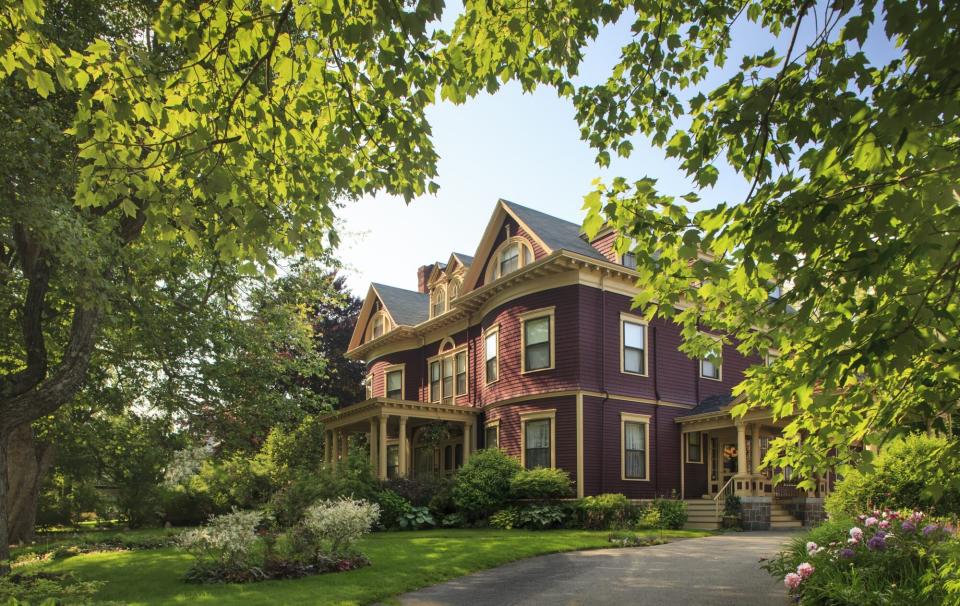
Getty Images
Choose the right tree, and it will quickly become the centerpiece of your landscape and add a "special warmth, personality, and dimension to the home, not to mention a charm to the neighborhood," says Mayfield Marks. "They are like sentries protecting our homes from wind, rain, and heat, and [they] beautifully [mark] each passing season." Ahead, find out which front yard trees can help boost the curb appeal of your home.
Related: The Fastest-Growing Trees to Plant in Your Garden
Shadbush or Juneberry (Amalanchier spp.)

Renate Frost / EyeEm / GETTY IMAGES
Zones: 3 to 9
Maturation: 15 years
Care: Easy
For a low-maintenance, versatile option for your front yard, consider the Shadbush tree, says Jennifer Bolstad, RLA, a certified arborist, landscape architect, community organizer for social and environmental justice, and the founder of Driftless Landscape Architecture. "This is a small tree, tolerant of full sun to partial shade, that is well-adapted to all but the heaviest (clay) soils," she says. "It requires little maintenance and offers interest throughout the seasons: Soft white blossoms in the spring produce a berry-like fruit in June, as per the name." These berries attract birds, but also "make a refreshingly tart jam or pie if you can beat the birds to the feast!" Bolstad says.
Come autumn, this tree's leaves become speckled with red, orange, apricot, or yellow—and in winter, the tree's bark is coated with subtle stripes and a calligraphic branching structure, says Bolstad.
Golden Rain Tree (Koelreuteria paniculata)
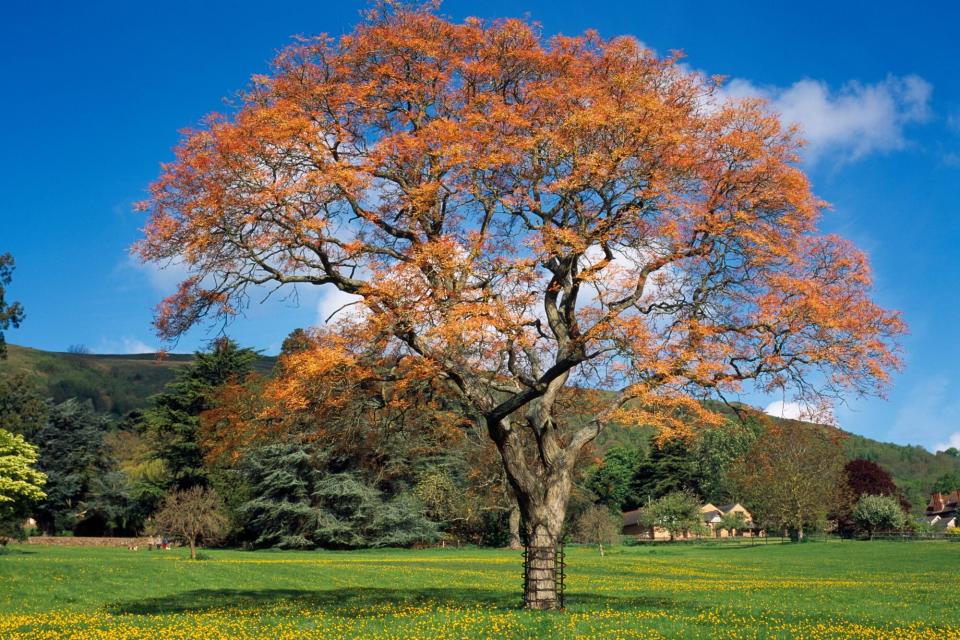
Eye Ubiquitous / GETTY IMAGES
Zones: 5 to 9
Maturation: 15 years
Care: Easy
A key rule of thumb when choosing a front yard tree is finding one that will enhance the design of your home, says Kristina ODonnell, an agent with Realty ONE Group. The tree should fit the size of your front yard, instead of overwhelming or hiding your house's details, she says. If you have a small to medium plot, the Golden Rain tree, formally known as Koelreuteria paniculata, is the perfect choice.
"It prefers full sun and is tolerant of a range of soil conditions and the stressors of urban sites," says Bolstad. "Its open branching structure and persistent, lantern-like seed pods provide winter interest." By the spring, feathery compound leaves will grow in.
Curious where this tree got its name? Golden blossoms "rain" from its branches in early- to mid-summer, says Bolstad. Once the tree hits full maturity, it can reach up to 40 feet in height. And while you can grow this tree in garden zones 5 to 9, plant it carefully in zones 7 to 9, as it can force out native plants, she says.
European Horsechestnut (Aesculus hippocastanum)
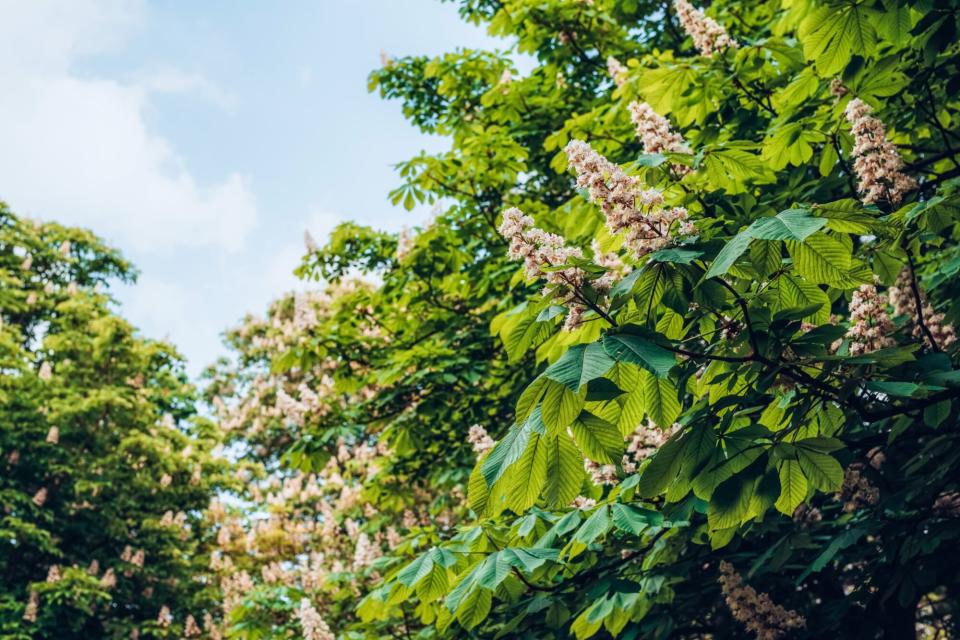
Oliver Helbig / GETTY IMAGES
Zones: 3 to 7
Maturation: 25 years
Care: Moderate
Perfect for a larger yard, the European Horsechestnut (Aesculus hippocastanum) stands 70 feet tall and nearly 60 feet wide at full maturity. "It prefers full sun or partial shade, and will tolerate heavier soils and some road salt," says Bolstad. "Its graceful, upright, oval branching structure lends gravitas to your property in the winter." Once spring arrives every year, stunning palm-shaped leaves with clusters of white flowers grow on the branches.
This tree has its pros and cons: "While it provides habitat for a variety of birds and small mammals, it can be messy when it drops fruit in the fall," says Bolstad. "This is a plant that requires some light maintenance, but it will reward your efforts with its classic, timeless elegance."
American Smoketree (Cotinus obovatus)
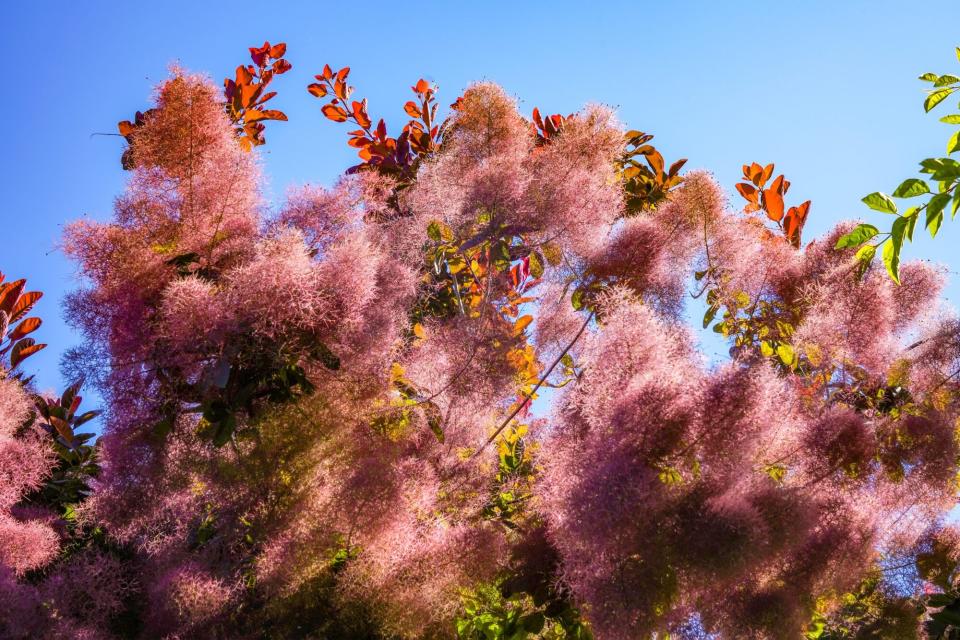
DoraDalton / GETTY IMAGES
Zones: 3 to 8
Maturation: 15 years
Care: Easy
The American Smoketree is ideal for front yards that are small to medium in size. "The Smoketree is far less common than dogwoods, crabapples, and cherries, but no less spectacular in its show-stopping late spring display of flowers that look like fireworks (hence the name)," says Bolstad. "It offers vivid and varied fall colors that might range from yellow, to orange, to red, to deep purple—sometimes all on the same plant."
Another winning feature is its scaly bark, which will add texture to your winter landscape. While this tree needs a sunny environment to thrive, it's adaptable to other conditions and tolerant to a variety of soils and urban environments. Just be sure not to over-water or over-fertilize, as this could cause growth problems.
Japanese Cryptomeria (Cryptomeria japonica)
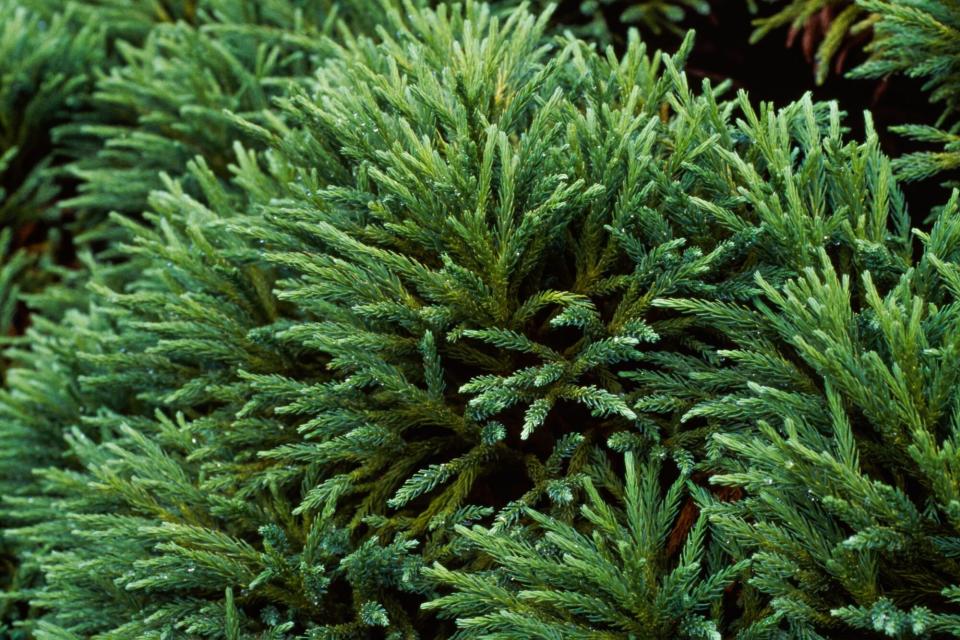
DEA / RANDOM / GETTY IMAGES
Zones: 5 to 9
Maturation: 15 years
Care: Easy to Moderate
Opt for an evergreen like the Japanese Cryptomeria for a larger front yard, as it requires minimal upkeep (no pruning required!). At maturity, this tree reaches nearly 50 feet in height and treats you to stunning foliage. "Its distinctive foliage has a fluffy texture and is soft to the touch, with the lustrous blue-green needles cladding foxtail-like branches," says Bolstad. "In the coldest extent of its range, the needles can turn bronze or purple."
This variety grows well in full sun to partial shade, however, it needs moist, well-drained, and slightly acidic soil to thrive (so make sure to check your soil's pH). And since it doesn't tolerate harsh winter winds, make sure you position the tree in an area that offers some protection from inclement weather, says Bolstad.

